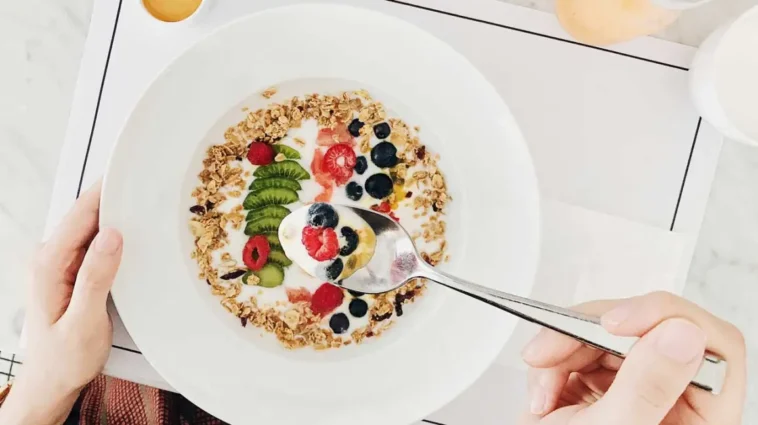Ever felt that burning sensation after a spicy meal or stressed-out workday? Your stomach lining might be waving a tiny white flag of surrender. But before you reach for another antacid, what if the solution was already sitting in your kitchen?...CONTINUE READING THE ARTICLE FROM THE SOURCE>>>
Your stomach lining—that remarkable barrier protecting you from digestive acids—deserves some serious love. When this lining gets irritated or damaged, it can lead to uncomfortable symptoms like heartburn, bloating, and even serious conditions like gastritis or ulcers.
But here’s the good news: Mother Nature has packed certain foods with protective compounds that can soothe, heal, and strengthen your stomach lining. Let’s dive into these stomach superheroes that deserve a spot on your plate.
Why your stomach lining needs protection
Your stomach is basically a mixing bowl filled with acid strong enough to dissolve metal. Pretty wild when you think about it. This powerful acid is essential for breaking down food and killing harmful bacteria, but it would also digest your own stomach if not for one crucial thing—your stomach lining.
This remarkable barrier, made of mucus and specialized cells, shields your body from self-digestion. But modern life throws plenty of challenges its way. Stress, alcohol, certain medications, bacterial infections, and even some foods can weaken this protective layer.
When your stomach lining becomes irritated or damaged, you might experience that familiar burning sensation of heartburn or acid reflux. Left unchecked, this can develop into gastritis or even stomach ulcers. Not fun.
Soothing superstars for your stomach
Fiber-rich foods
Think of fiber as your stomach’s personal bodyguard. Foods like oatmeal, bananas, apples, and whole grains form a soft, gel-like substance that coats your stomach lining and creates a protective barrier against acid. Plus, fiber helps keep things moving through your digestive tract, reducing the time stomach acid hangs around irritating your lining.
Start your day with a warm bowl of oatmeal topped with sliced bananas. Not only will it keep you full until lunch, but it’ll also form a soothing layer on your stomach lining. For a double-duty benefit, grab an apple as your afternoon snack—the pectin fiber is especially effective at coating and protecting your stomach.
Probiotic powerhouses
Your gut houses trillions of beneficial bacteria that help maintain a healthy stomach lining. Foods like yogurt, kefir, sauerkraut, and kimchi deliver these friendly microbes directly to your digestive system.
These good bacteria help fight off harmful microbes like H. pylori that can damage your stomach lining. They also produce short-chain fatty acids that nourish the cells of your stomach lining and reduce inflammation.
Try adding a serving of plain yogurt to your daily routine. The live cultures can help maintain the integrity of your stomach lining while crowding out harmful bacteria. Just be sure to choose varieties without added sugars, which can feed the wrong kinds of gut bacteria.
Flavonoid-rich fruits and vegetables
Colorful fruits and vegetables aren’t just pretty—they’re packed with protective compounds called flavonoids. These plant chemicals have been shown to inhibit the growth of H. pylori bacteria and reduce inflammation in the stomach lining.
Berries, apples, onions, garlic, and leafy greens are particularly rich in stomach-friendly flavonoids. These foods help strengthen the stomach’s mucosal defenses and may even help repair damaged stomach tissue.
Add a handful of blueberries to your breakfast or toss some spinach into your smoothie. Your taste buds and your stomach lining will thank you.
Gentle oils and fats
Not all fats are created equal when it comes to stomach health. While some can irritate your stomach lining, others can actually help protect it. Extra virgin olive oil contains polyphenols and oleocanthal, which have anti-inflammatory effects similar to ibuprofen but without the stomach-irritating side effects.
Similarly, the omega-3 fatty acids found in fatty fish like salmon, mackerel, and sardines help reduce inflammation throughout your body, including your stomach lining. These healthy fats can help repair damage and strengthen your gut’s defenses.
Drizzle some extra virgin olive oil over your salad or enjoy a piece of wild-caught salmon twice a week to give your stomach lining the fatty protection it craves.
Soothing herbs and spices
Many traditional remedies for stomach complaints center around certain herbs and spices—and modern science is confirming their benefits. Ginger has powerful anti-inflammatory and antioxidant properties that can help protect your stomach lining from damage and reduce symptoms of indigestion.
Turmeric contains curcumin, which has been shown to stimulate the production of mucus that protects the stomach lining. Chamomile, licorice root, and marshmallow root also have stomach-soothing properties that can help maintain a healthy gut lining.
Try sipping on ginger tea when your stomach feels unsettled, or add a pinch of turmeric to your soups and stews for an anti-inflammatory boost.
Foods to approach with caution
While we’re celebrating stomach-friendly foods, it’s worth mentioning a few that might not be invited to the party. Acidic foods like tomatoes and citrus fruits, spicy foods, alcohol, caffeine, and processed foods high in unhealthy fats and sugars can all irritate a sensitive stomach lining.
That doesn’t mean you need to cut them out completely, but being mindful of how these foods affect you personally can help you make choices that keep your stomach happy.
Building your stomach-friendly plate
Creating meals that protect your stomach lining doesn’t have to be complicated. Try this simple formula:
- Start with a base of whole grains or starchy vegetables
- Add a serving of lean protein like fish, chicken, or plant-based options
- Include plenty of non-starchy vegetables in various colors
- Add a source of healthy fat like olive oil or avocado
- Include fermented foods as a side or condiment
This approach ensures you’re getting a mix of fiber, protein, healthy fats, and probiotics—all key players in maintaining a healthy stomach lining.
The bigger picture
Remember that protecting your stomach lining isn’t just about what you eat—it’s also about how you eat. Eating slowly, chewing thoroughly, staying hydrated, managing stress, and getting regular exercise all play important roles in maintaining a healthy gut.
By focusing on stomach-friendly foods and mindful eating habits, you’re not just avoiding discomfort—you’re building the foundation for better overall health. After all, a happy stomach means a happier you.
So next time you feel that familiar burn, skip the antacid and head to your kitchen instead. Your new stomach-soothing allies are waiting to help…CONTINUE READING>>


